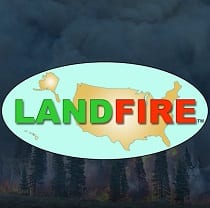Fuels & Fuel Treatments
Webinar recording (7:49)
The recent fires that swept the central and southern plains are catastrophic and exhibited extreme fire behavior. Fire behavior is a result of fuels, weather and topography and in this case the weather and fuels were extreme, and most importantly, the timing was just right. In this webcast, USFS, Research Ecologist Dr. Matt Reeves analyzes rangeland fuel conditions in the southern plains and keys in on the critical aspect of growing season position that is so influential to fire hazard. The conditions have to be just right to produce the type of outcomes witnessed in March and the high amount of standing dead grass (the minimum loading of herbaceous material in the fires we have seen to date was about 1200 pounds per acre on average), with no growth yet of green herbaceous material in the 2025 growing season permitted the extreme fire behavior across the region. All previous recordings are located on the Reading the Tea Leaves page.
Webinar registration
Presenter: Sarah Anderson, Ecologist, Terrestrial Condition Assessment Coordinator
Partner Organization: US Forest Service, Terrestrial Condition Assessment Program, Natural Resources Staff Area, Washington DC Office
View article.
We present a mixed integer programming model for prioritizing fuel treatments within a landscape fuel break network to maximize protection against wildfires, measured by the total fire size reduction or the sum of Wildland Urban Interface areas avoided from burning. This model uses a large dataset of simulated wildfires in a large landscape to inform fuel break treatment decisions. Its mathematical formulation is concise and computationally efficient, allowing for customization and expansion to address more complex and challenging fuel break management problems in diverse landscapes. We constructed test cases for Southern California of the United States to understand model outcomes across a wide range of fire and fuel management scenarios. Results suggest optimal fuel treatment layouts within the Southern California’s fuel break network responding to various model assumptions, which offer insights for regional fuel break planning. Comparative tests between the proposed optimization model and a rule-based simulation approach indicate that the optimization model can provide significantly better solutions within reasonable solving times, highlighting its potential to support fuel break management and planning decisions.
View article.
We developed species distribution models with dryland-focused predictors to project environmental suitability changes across the entirety of three pinyon and six juniper species ranges. We identify areas of robust suitability change by combining suitability projections from multiple emissions scenarios and time periods. PJ species’ suitabilities respond to many temperature and moisture covariates expected to change in the future. Projected responses among PJ species are highly variable, ranging from modest declines with concurrent gains for overall little net change to wide-ranging declines with no gains for overall range contractions. Environmental suitability is projected to decline broadly across the arid United States Southwest and remain relatively stable across the northern Great Basin and Colorado Plateau. Our results suggest unique responses of PJ species to future climate change. We found that species were projected to experience more losses than gains in suitability, for overall range shrinks rather than shifts. Land managers have the capacity to increase woodland resilience to drought, and our results can inform rangeland-wide management planning and conservation efforts in PJ woodlands.
View factsheet.
When we talk about wildfire fuel, we don’t mean gasoline or diesel. The term fuel refers to both dead and living vegetation that can burn, as well as homes and other structures that can ignite. This is particularly important in areas where urban development meets the natural environment, known as the wildland urban interface (WUI). Wildfires are becoming increasingly destructive across many ecosystems, including forests, woodlands, and rangelands. Climate change, human-caused ignitions, the encroachment of homes into the natural environment and the volume, density and health of fuel on the landscape all contribute to this escalating problem. In this fact sheet, we will explore some different “tools in the toolbox” for managing fuel in Nevada.
Stand composition and development stage affect fuel characteristics of quaking aspen forests in Utah
View article.
We investigated surface and canopy fuel characteristics in 80 aspen stands in Utah, U.S., that spanned gradients of tree species composition from aspen to conifer dominance and stand development from early to late stages. We quantified fuel type and load, measured fuel moisture content in representative stands across two summer seasons, and modeled flame lengths in each stand. Fuel type and load varied greatly across stands, though late development, conifer-dominated stands had significantly higher (∼2-5 times) fine dead woody and litter load and significantly lower (∼2-5 times) live understory herbaceous load compared to pure aspen stands. Fuel moisture content did not vary by stand type. Modeled flame lengths were lowest in pure aspen stands, and flame lengths increased linearly with decreasing aspen composition, suggesting that potential surface fire behavior increases as a seral aspen stand progresses through succession to conifer dominance.
View article.
We used novel data sources to measure how recreation was influenced by fuels reduction efforts under the US Forest Service Collaborative Forest Landscape Restoration (CFLR) Program. We used posts to four social media platforms to estimate the number of social media user-days within CFLR landscapes and asked: (1) did visitation within CFLR Program landscapes between 2012 and 2020 change in a manner consistent with the pattern on nearby lands, and (2) was there a relationship between the magnitudes of specific fuel treatment activities within CFLR landscapes and visitation to that landscape? In aggregate, visitation to the CFLR landscapes changed at a rate mirroring the trend observed elsewhere. Within CFLR landscapes, pre-commercial thinning and pruning had slight positive influences on visitation whereas prescribed burning and managed wildfire had slight negative influences.
View article.
We found that within the sagebrush biome, fuel breaks are generally located in areas with high burn probability and are thus positioned well to intercept potential wildfires. However, fuel breaks are also frequently positioned in areas with lower predicted fuel break effectiveness relative to the sagebrush biome overall. Fuel breaks also are spatially associated with high invasive grass cover, indicating the need to better understand the causal relationship between fuel breaks and annual invasive grasses. We also show that the fuel break network is dense within priority wildlife habitats. Dense fuel breaks within wildlife habitats may trade off wildfire protection for decreased integrity of such habitats.
View article and brief.
Although fuels treatments are generally shown to be effective at reducing fire severity, there is widespread interest in monitoring that efficacy as the climate continues to warm and the incidence of extreme fire weather increases. This paper compared basal area mortality across adjacent treated and untreated sites in the 2021 Dixie Fire of California’s Sierra Nevada.
View article.
This study aimed to determine the flammability of cheatgrass compared to two native perennial grasses (Columbia needlegrass [Achnatherum nelsonii] and bluebunch wheatgrass [Pseudoroegneria spicata]) across a range of fuel moistures. All three grass species had decreased flammability with increasing fuel moisture. Columbia needlegrass averaged 11% lower mass consumption than cheatgrass, and bluebunch wheatgrass had longer flaming duration and higher maximum temperatures than cheatgrass and Columbia needlegrass. The addition of cheatgrass to each perennial grass increased combined mass consumption, flaming duration, and flame heights. For these three attributes, the impact differed by the amount of cheatgrass in the mixture. Maximum and mean temperatures during perennial grass combustion were similar with and without cheatgrass addition. Some attributes of Columbia needlegrass flammability when burned with cheatgrass were higher than expected based on the flammability of each species, suggesting that Columbia needlegrass may be susceptible to pre-heating from combustion of cheatgrass. Conversely, the flammability of bluebunch wheatgrass and cheatgrass together had both positive and negative interactive effects, suggesting the impact on joint flammability from cheatgrass differs by perennial grass species.





